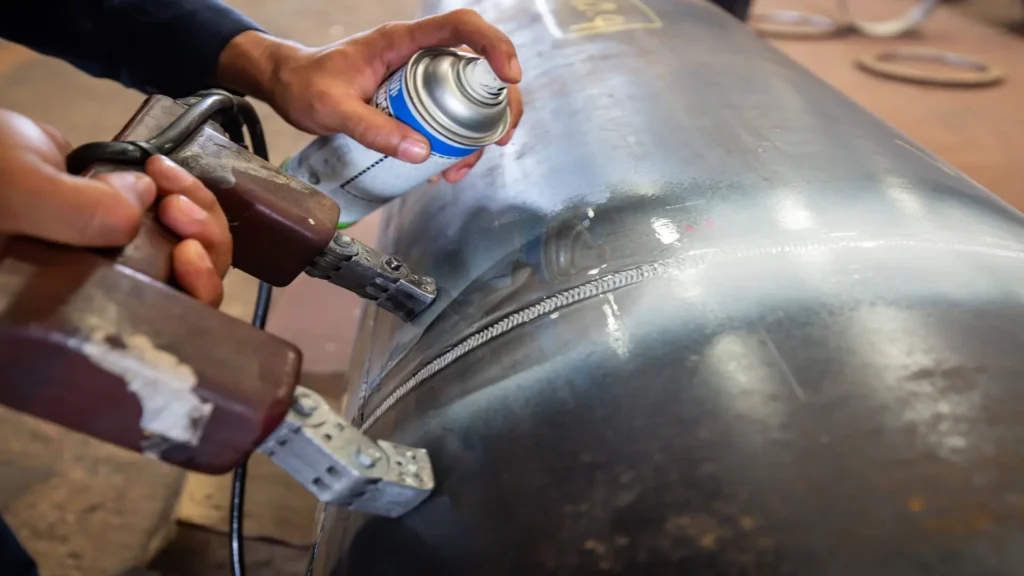A Comprehensive Overview to Welding Inspection Madison Criteria
Wiki Article
The Importance of Thorough Welding Inspection in Industrial Applications
In the realm of industrial applications, the significance of precise welding examination can not be overstated. As we check out the complex advantages of diligent welding evaluations, one should think about the wider implications on safety, dependability, and cost-effectiveness in commercial operations.Enhancing Architectural Honesty
When it comes to welding examination in industrial applications, improving structural stability is paramount. The key goal of welding examination is to ensure that the welds are qualified of bearing the anticipated stresses and tons they will certainly run into in service.The value of maintaining structural stability in welded structures can not be overstated. Improperly carried out welds can cause disastrous failings, resulting in expensive fixings, downtime, and even endangerment of human lives. Consequently, inspectors play an important function in the lifecycle of industrial elements, giving assurance that the welding process supplies the wanted toughness and sturdiness.
Moreover, progressed technologies, such as phased selection ultrasonic screening and digital radiography, offer improved abilities in identifying potential weak points, enabling for corrective measures prior to problems escalate. By focusing on the stability of welds with meticulous inspection, industries can make sure operational performance and extend the durability of their facilities.
Recognizing Welding Defects
Recognizing welding flaws is a critical facet of making sure the safety and reliability of bonded structures. These problems can compromise the integrity of the whole assembly and, if left unaddressed, might lead to disastrous failings. Typical welding issues include porosity, fractures, incomplete combination, and damaging. Each of these issues emerges from details causes, such as incorrect welding methods, contamination, or poor warm control.
Skilled inspectors make use of both aesthetic evaluation and advanced non-destructive screening (NDT) approaches, such as radiographic or ultrasonic testing, to find these issues. The timely identification and correction of welding problems are important to preserve the structural honesty and longevity of commercial elements.
Guaranteeing Conformity Standards
Compliance with well-known requirements, such as those provided by the American Welding Culture (AWS) and the International Organization for Standardization (ISO), ensures that welds meet minimum safety and security and quality requirements. These requirements incorporate a vast variety of criteria, consisting of product specs, welding treatments, and certification of welders.
Routine audits and evaluations are important in validating conformity. Assessors need to have an extensive understanding of the appropriate criteria and be experienced at using various non-destructive testing (NDT) approaches to assess weld high quality. By making sure that welding techniques line up with conformity criteria, firms mitigate the risk of non-conformity, which can cause legal responsibilities and safety and security dangers.
In addition, preserving conformity not just safeguards structural honesty however likewise boosts a company's online reputation in the sector. Stakeholders and clients are more likely to depend on firms that constantly show a dedication to quality and security with strenuous conformity. Therefore, ensuring compliance standards is an important part in the effective implementation of welding in industrial applications.
Decreasing Upkeep Expenses

The application of innovative non-destructive testing (NDT) methods, including ultrasonic, radiographic, and magnetic particle assessments, boosts the capability to find subsurface imperfections without jeopardizing the structural stability of elements. By utilizing these strategies, industries can significantly expand the solution life of their devices, reducing downtime and the associated economic worry of maintenance tasks.
In addition, a durable welding inspection routine supports the optimization of upkeep schedules, changing from reactive to predictive maintenance techniques. This proactive approach not just reduces unexpected failures yet additionally improves source allocation, ensuring that upkeep efforts are concentrated and reliable. Ultimately, the financial investment in extensive welding evaluation is countered by the significant top article savings realized via reduced maintenance needs, adding positively to the general operational performance of commercial enterprises.
Improving Security Measures
Welding evaluation plays an essential role in this context, as it makes certain that all joints and connections fulfill rigorous safety requirements. Comprehensive inspections assist determine flaws such as cracks, porosity, or incomplete fusion that might compromise structural honesty.Methods like ultrasonic testing, radiographic screening, and magnetic bit evaluation permit for thorough evaluation without harming the framework. Executing a robust top quality control system that includes normal training see it here for examiners and welders ensures adherence to established security criteria.
Finally, fostering a society of safety within the organization emphasizes the significance of detailed welding examinations. Encouraging open communication and partnership among assessors, engineers, and welders adds to a common commitment to security quality. Welding Inspection Madison. In doing so, markets can safeguard their operations, shield personnel, and preserve public trust

Conclusion
Extensive welding inspection is crucial in commercial applications, considerably boosting architectural integrity and reliability. By employing innovative non-destructive screening approaches, potential welding flaws such as cracks and insufficient blend are recognized early, guaranteeing compliance with sector criteria and fostering customer count on. Extensive inspections result in minimized maintenance expenses and add to a safer working environment. Eventually, the thorough execution of welding evaluations plays an important function in preserving functional performance and safety in industrial settings.As we explore the multifaceted advantages of persistent welding assessments, one should take into consideration the more comprehensive implications on safety, reliability, and cost-effectiveness in commercial operations.
The key objective of welding examination is to make sure that the welds are capable of bearing the anticipated loads and stresses they will certainly encounter in solution. Effective welding inspection plays an essential duty in minimizing these prices by guaranteeing the stability and long life of welds, thus minimizing the risk of premature failures.Complete welding evaluation is vital in commercial applications, significantly boosting architectural integrity and integrity. Eventually, the thorough implementation of welding assessments plays a critical duty in keeping operational effectiveness and safety and security in click here to read industrial setups.
Report this wiki page